SAT 2016
PRACTICE TEST 2
1. Reading Test
65 MINUTES 52 QUESTIONS
2. Writing and Language Test
35 MINUTES 44 QUESTIONS
3. Math Test – No Calculator
25 MINUTES 20 QUESTIONS
4. Math Test – Calculator
55 MINUTES 38 QUESTIONS
5. Essay (optional)
50 MINUTES 1 QUESTION
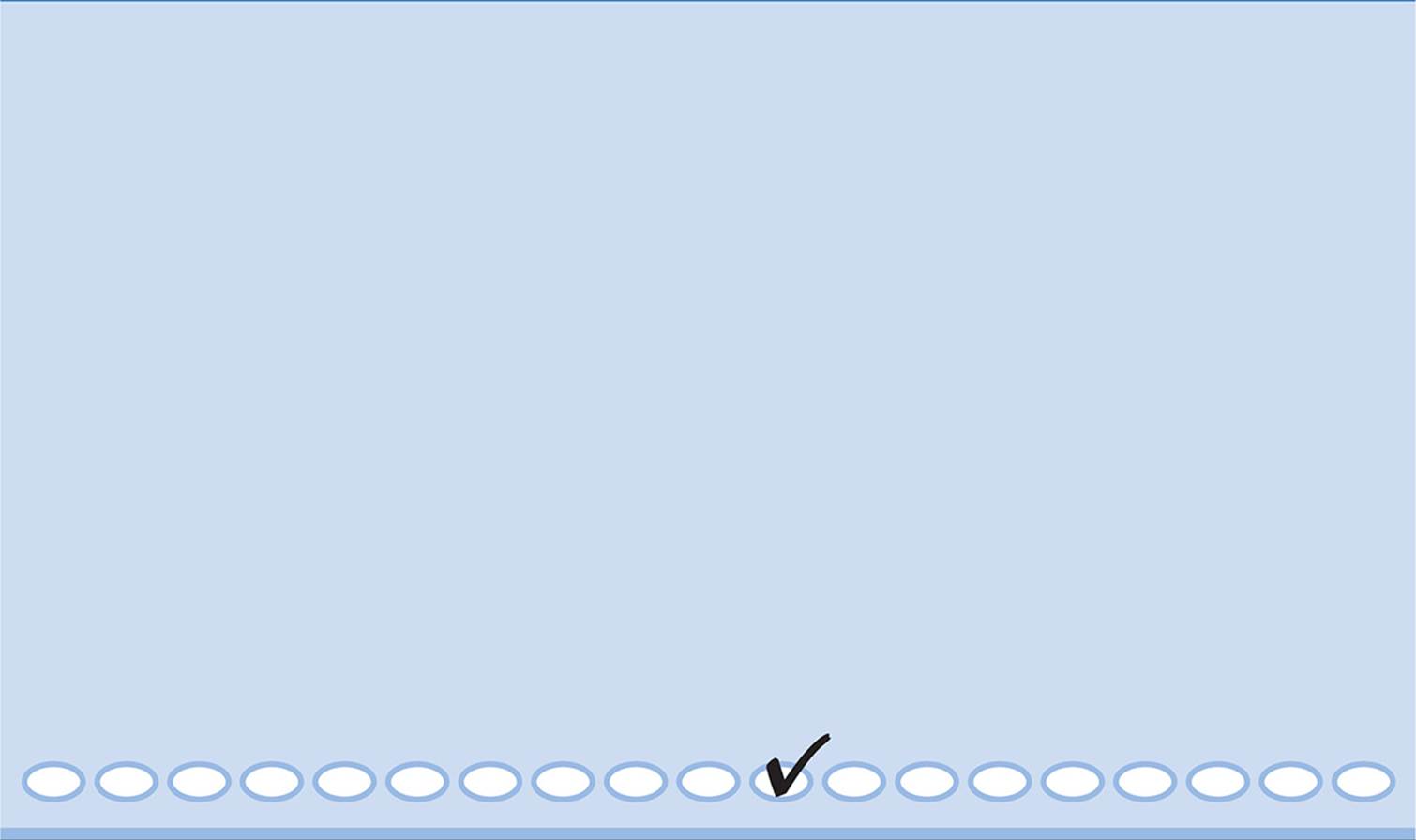
ANSWER SHEET
Start with number 1 for each new section. If a section has fewer questions than answer spaces, leave the extra answer spaces blank. Be sure to erase any errors or stray marks completely.


Start with number 1 for each new section. If a section has fewer questions than answer spaces, leave the extra answer spaces blank. Be sure to erase any errors or stray marks completely.

CAUTIONUse the answer spaces in the grids below for Section 3 only if you are told to do so in your test book.
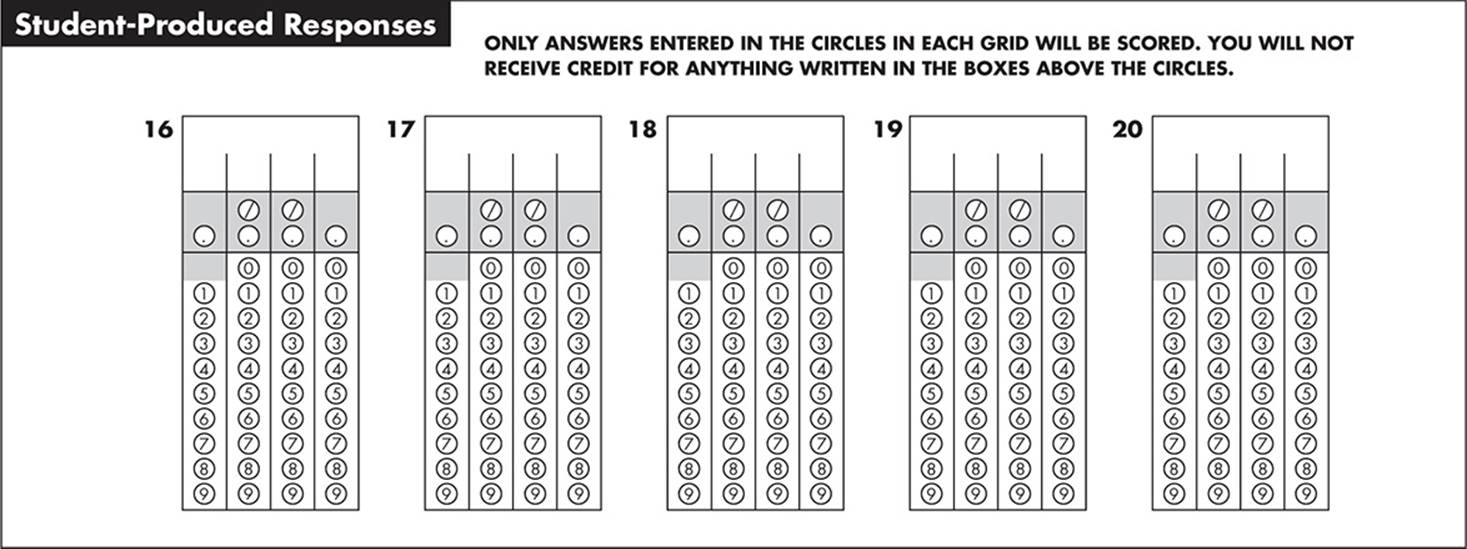
Start with number 1 for each new section. If a section has fewer questions than answer spaces, leave the extra answer spaces blank. Be sure to erase any errors or stray marks completely.

CAUTIONUse the answer spaces in the grids below for Section 4 only if you are told to do so in your test book.
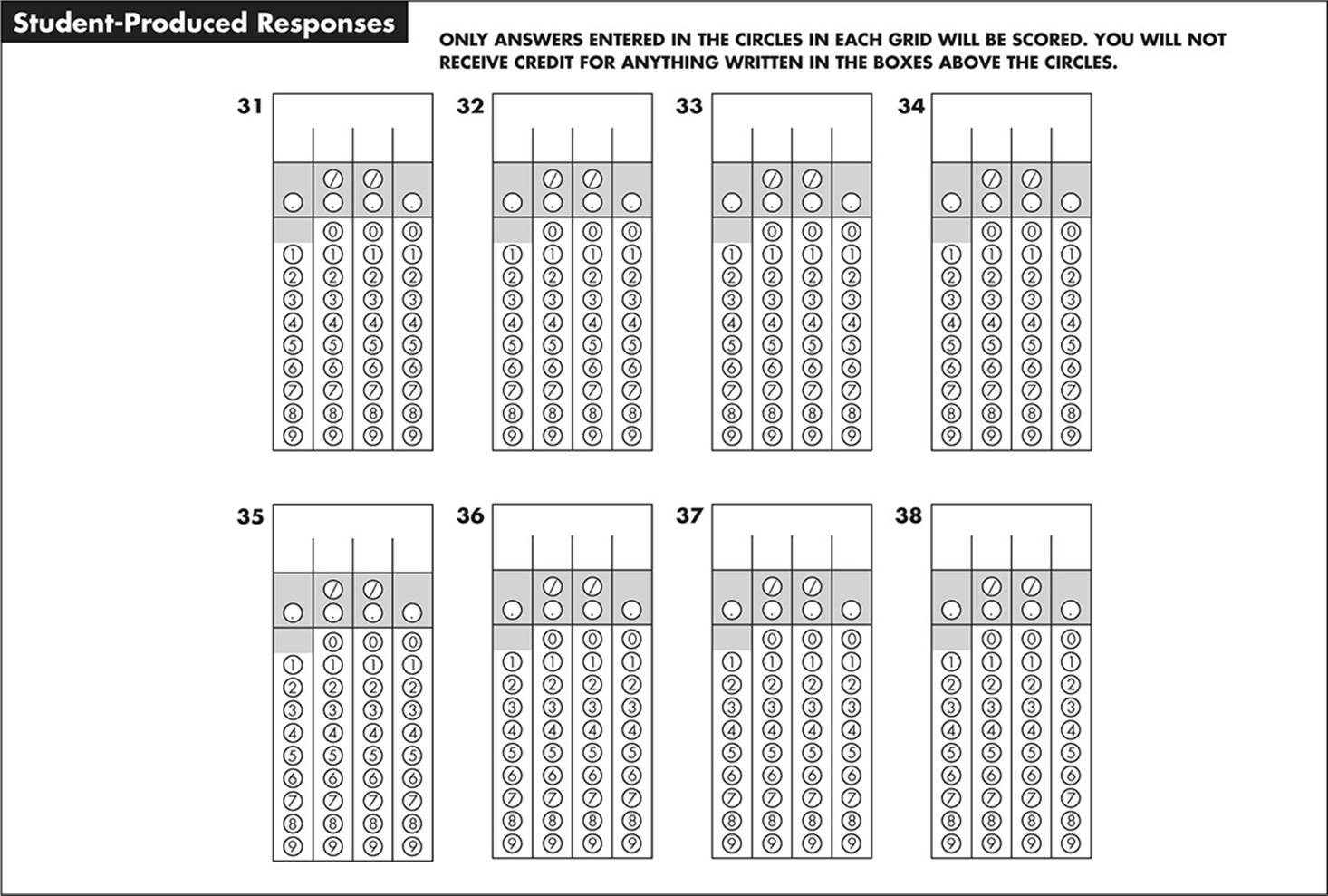
SECTION 5: ESSAY
You may wish to remove these sample answer document pages to respond to the practice SAT Essay Test.
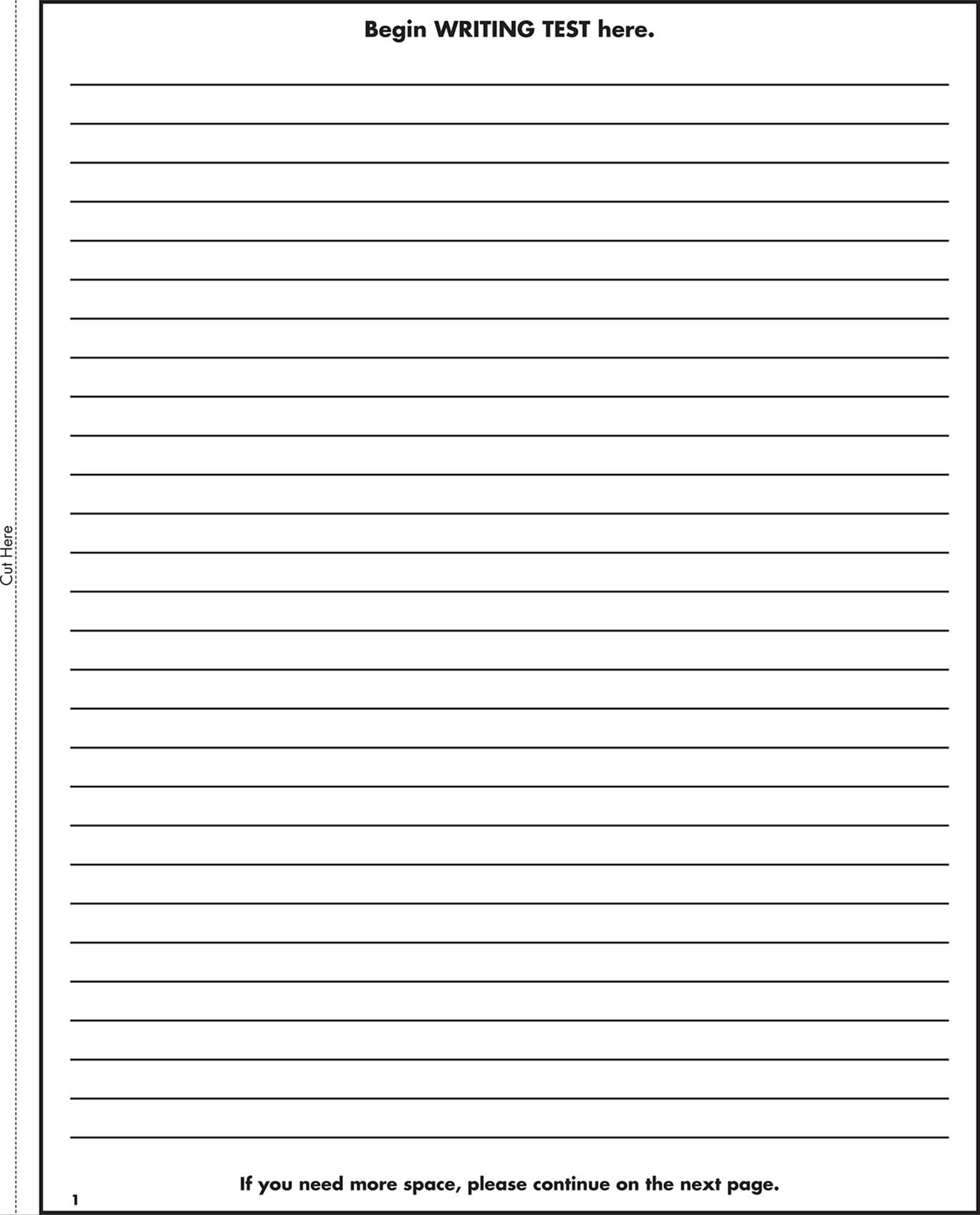
SECTION 5: ESSAY
You may wish to remove these sample answer document pages to respond to the practice SAT Essay Test.
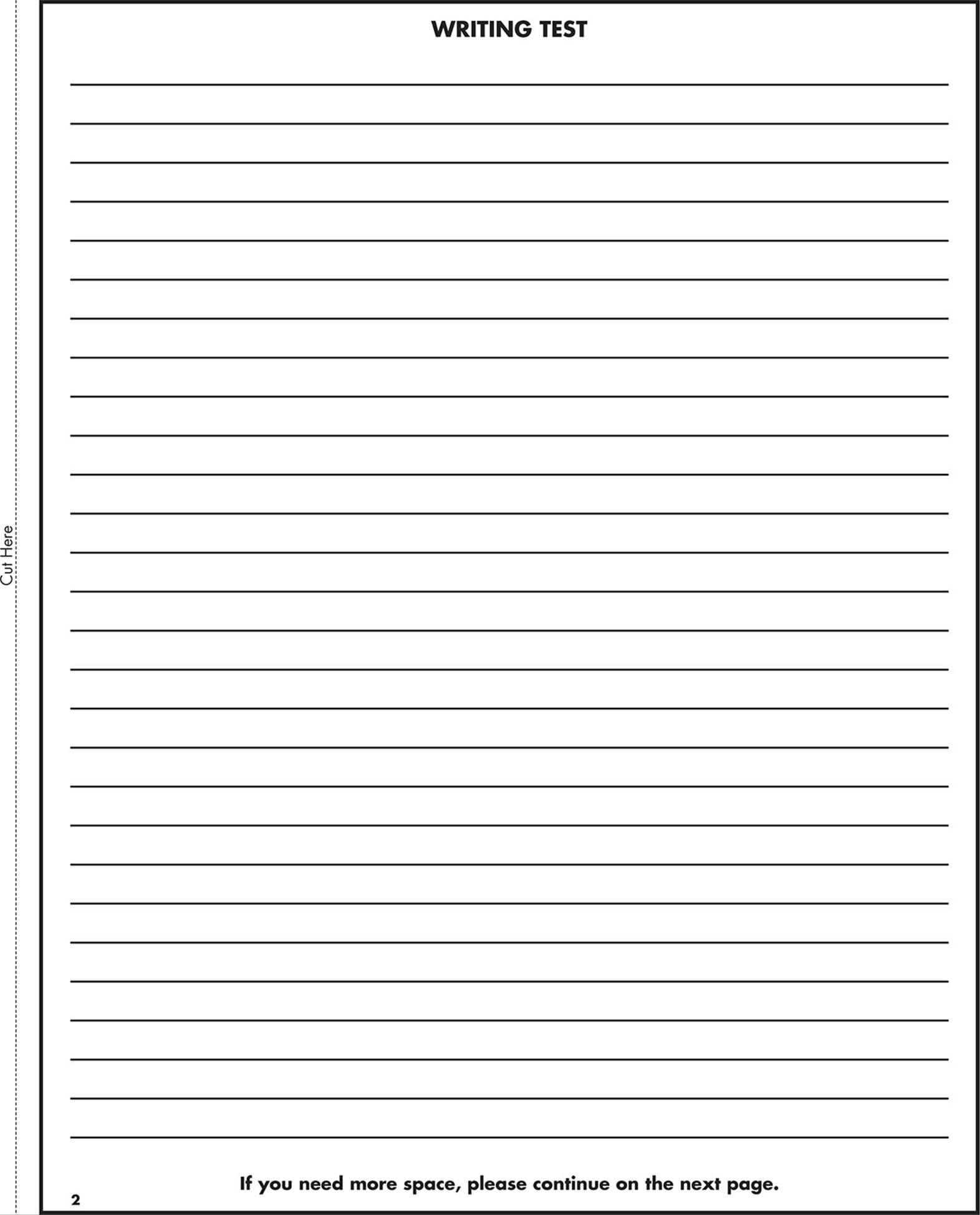
SECTION 5: ESSAY
You may wish to remove these sample answer document pages to respond to the practice SAT Essay Test.
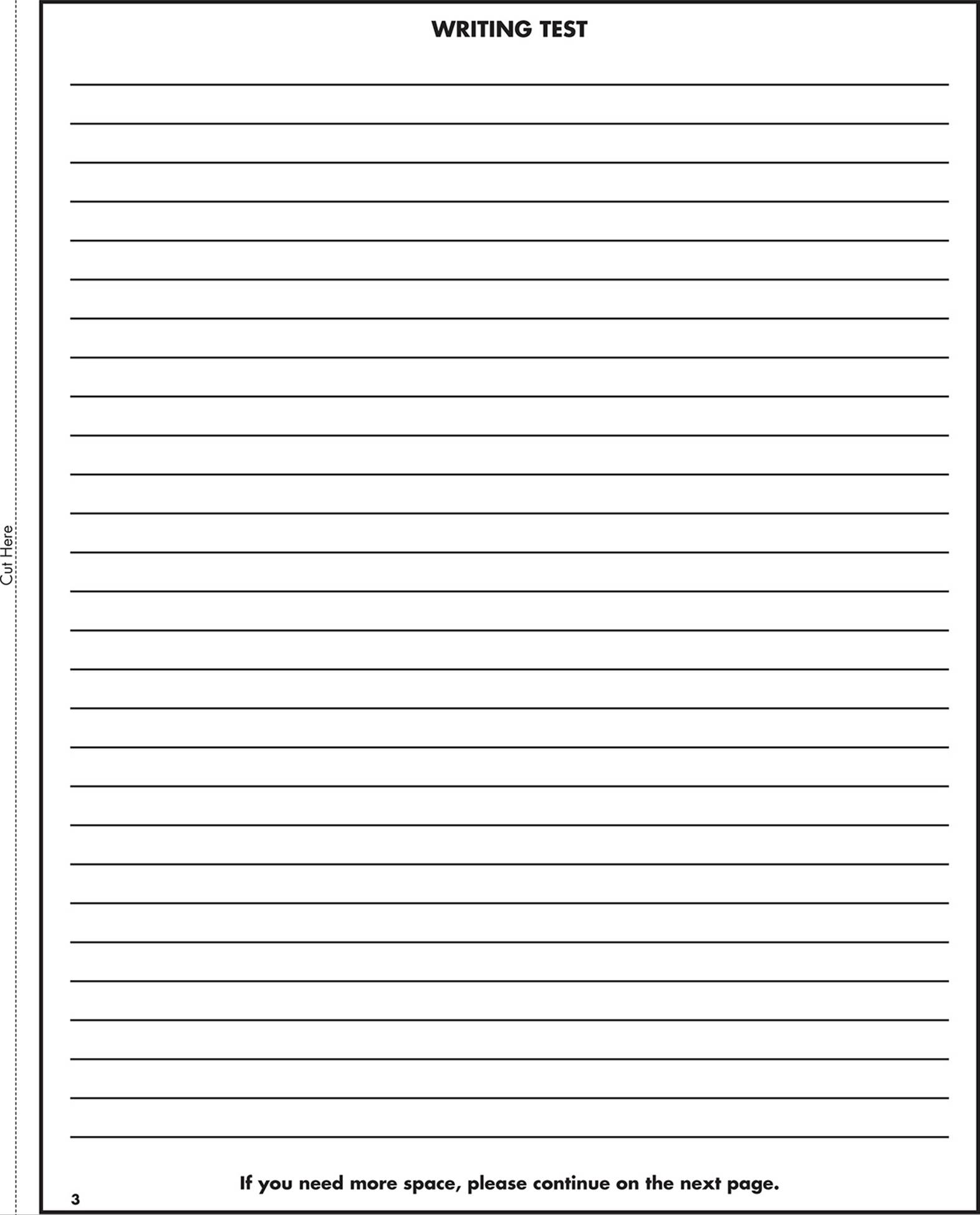
SECTION 5: ESSAY
You may wish to remove these sample answer document pages to respond to the practice SAT Essay Test.
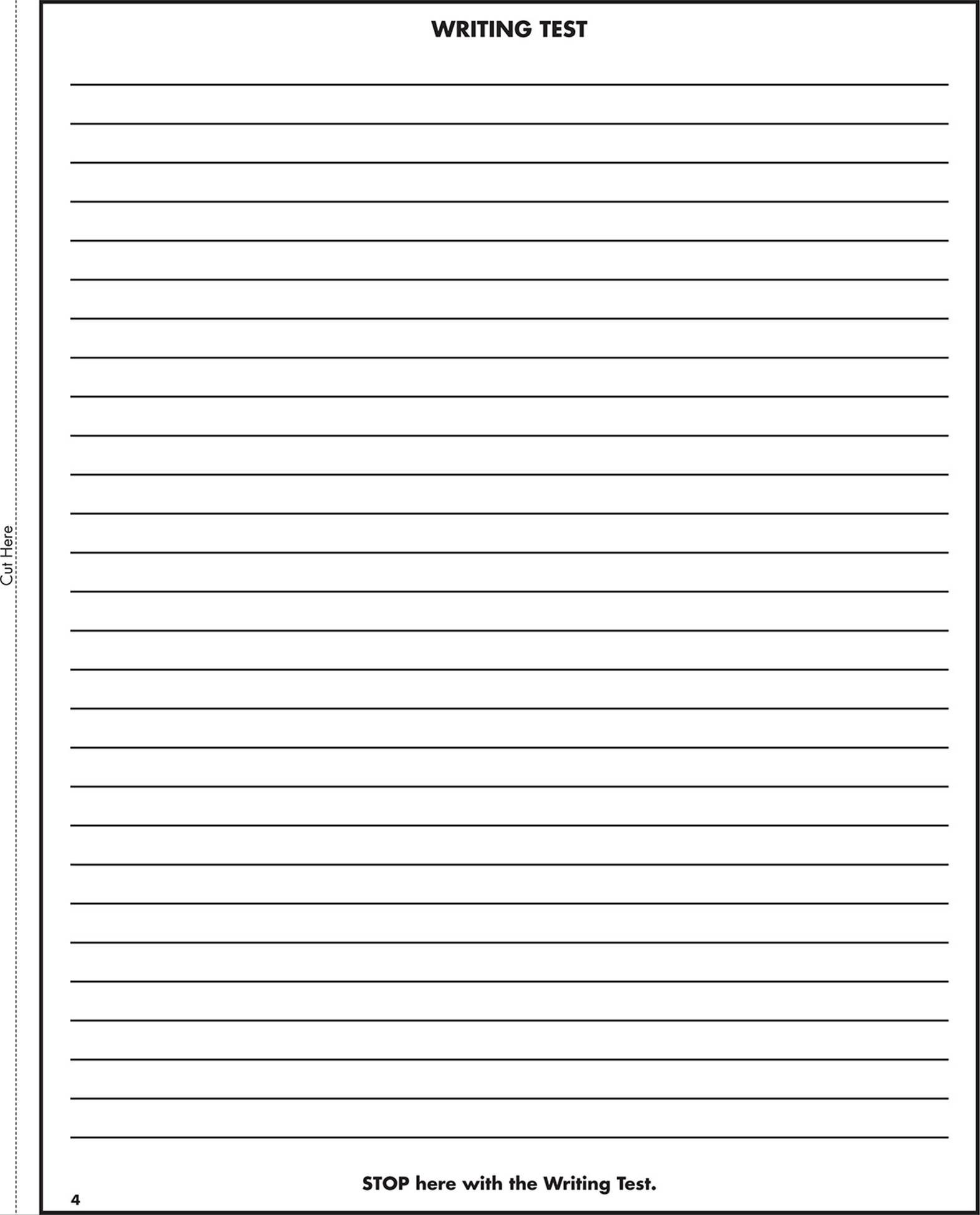

Reading Test
65 MINUTES, 52 QUESTIONS
Turn to Section 1 of your answer sheet to answer the questions in this section.
DIRECTIONS
Each passage or pair of passages below is followed by a number of questions. After reading each passage or pair, choose the best answer to each question based on what is stated or implied in the passage or passages and in any accompanying graphics.
Questions 1–10 are based on the following passage.
This passage is from Ralph Waldo Emerson, “Prudence.” Public domain. First published in 1841.
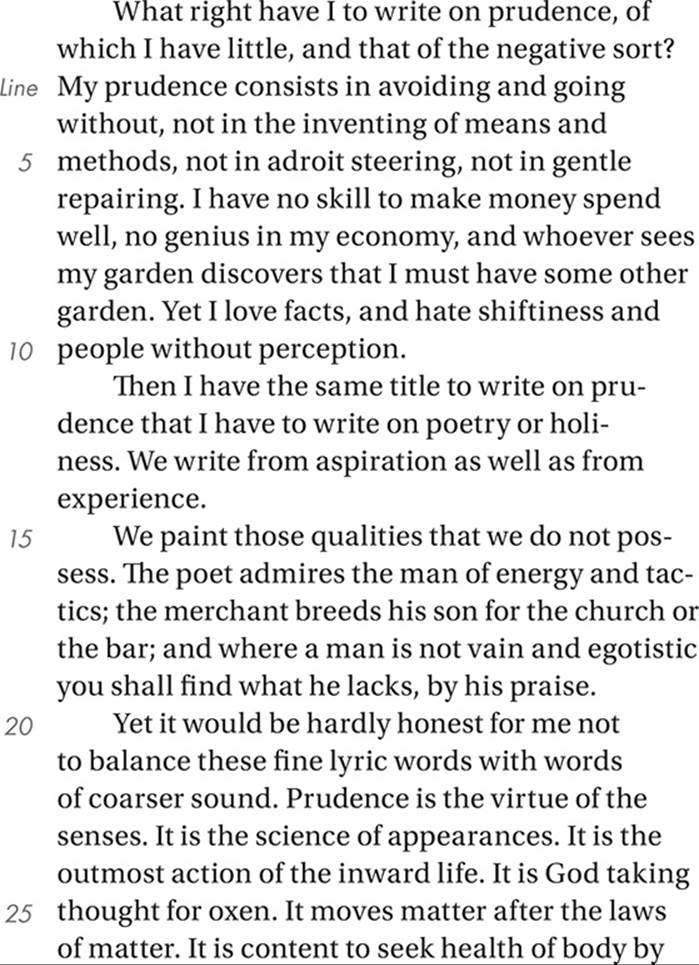
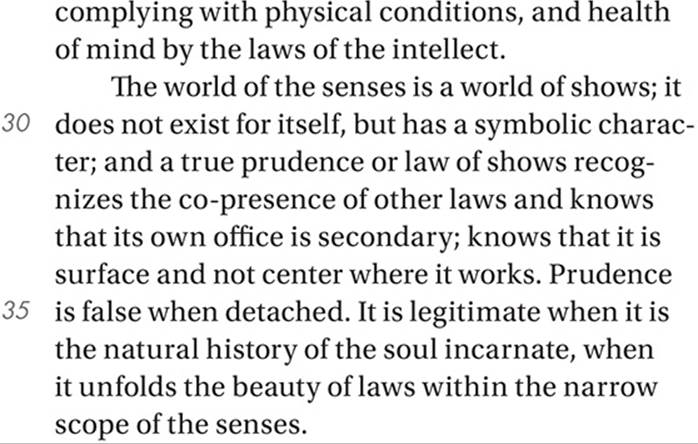
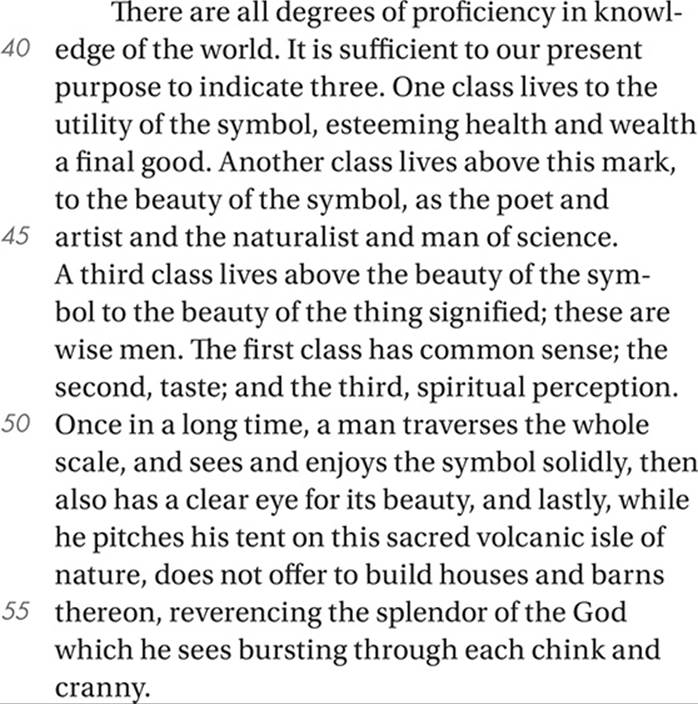
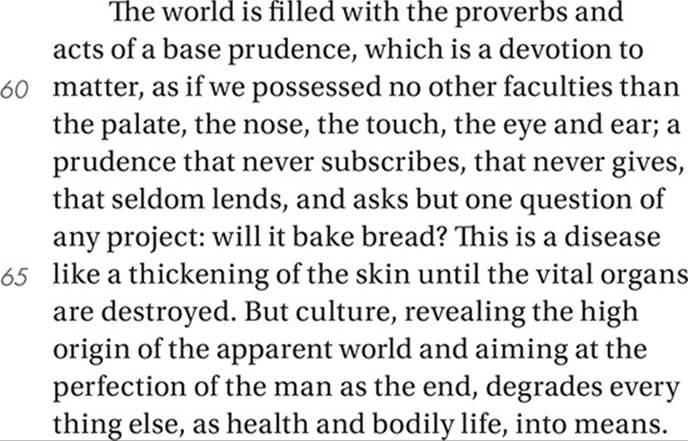
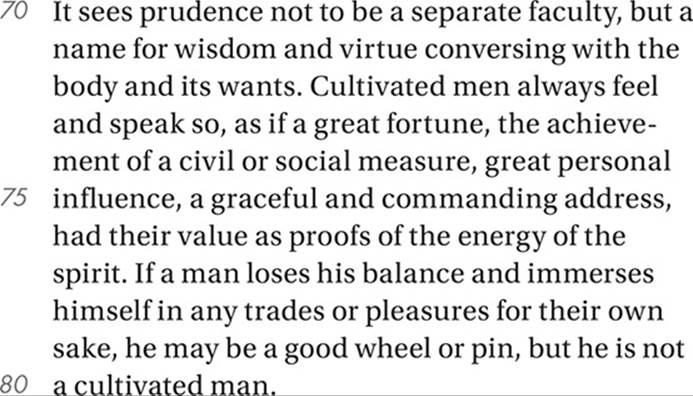
1
The tone of the first paragraph is best described as
A) self-effacing.
B) pontifical.
C) aspirational.
D) sardonic.
2
The author”s reference to “some other garden” (lines 8–9) primarily suggests that he
A) finds solace in the art of planting.
B) seeks new challenges and experiences.
C) considers arable land to be a valuable resource.
D) lacks the particular skills associated with farming.
3
In line 11, “title” most nearly means
A) ownership.
B) office.
C) authority.
D) publication.
4
The author believes that he is justified in acting as an authority on prudence primarily because of his
A) experience in making decisions.
B) regret for his past mistakes.
C) studies in classical philosophy.
D) yearning for wisdom.
5
Which choice provides the strongest evidence for the answer to the previous question?
A) Lines 6–9 (“I have no skill . . . some other garden”)
B) Lines 13–14 (“We write from . . . as well as from experience”)
C) Lines 20–22 (“Yet it would . . . coarser sound”)
D) Lines 26–28 (“It is content . . . laws of the intellect”)
6
The passage suggests that members of the “third class” (line 46) are superior for their ability to
A) solve important problems.
B) discern sublime qualities.
C) create works of beauty.
D) reason logically.
7
The “houses and barns” (line 54) represent
A) an unwise allegiance to worldly things.
B) the rejection of mere symbols.
C) the nobility of living with nature.
D) the importance of strong belief.
8
In line 58, “base” most nearly means
A) supportive.
B) ignoble.
C) necessary.
D) straightforward.
9
The “disease” mentioned in line 64 is best described as
A) apathy.
B) gluttony.
C) sensuousness.
D) egotism.
10
The passage as a whole characterizes prudence primarily as.
A) the aspiration to wisdom and righteousness.
B) a commitment to aesthetic principles.
C) the pursuit of practical skills and sensory experience.
D) the noble pursuit of spiritual goals.
Questions 11–21 are based on the following passage.
This passage is from Joseph Conrad, The Secret Sharer. It was originally published in 1912. The narrator of this story is the captain of a ship about to begin a voyage.
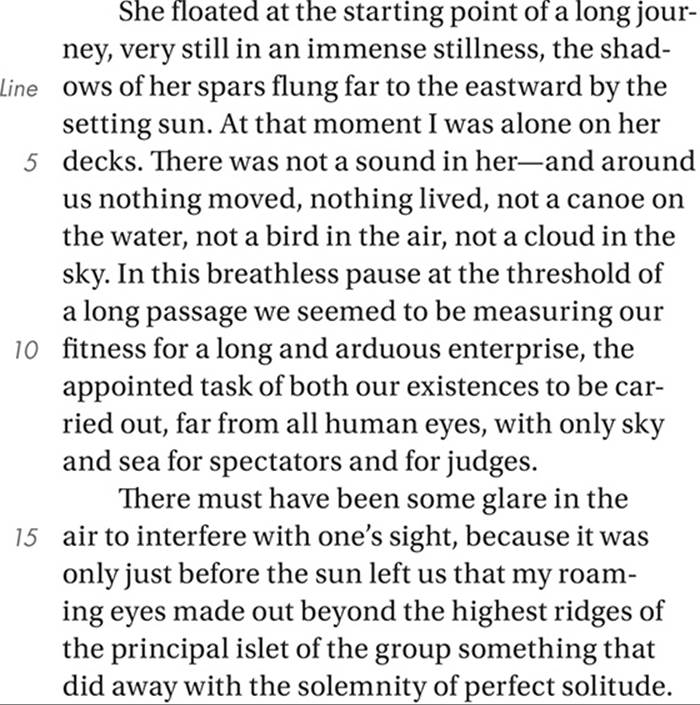
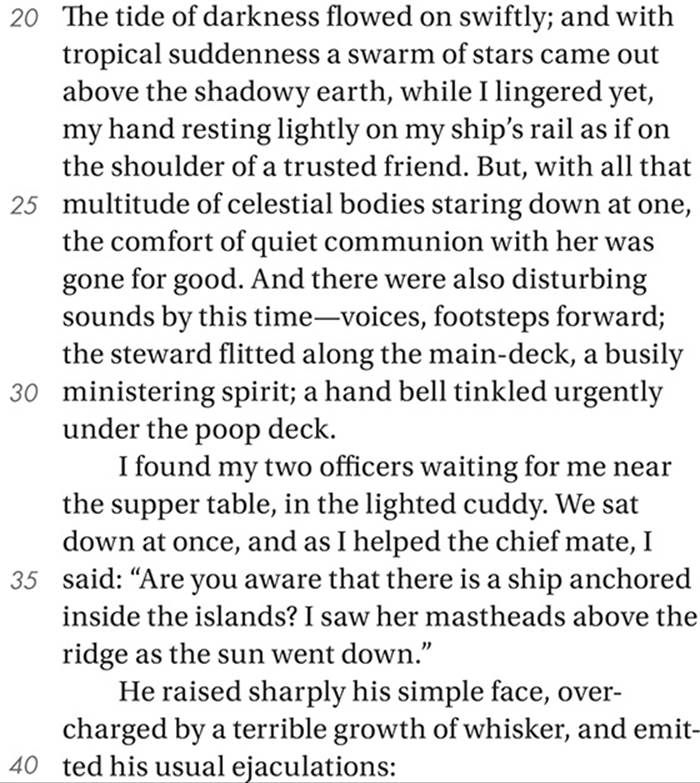
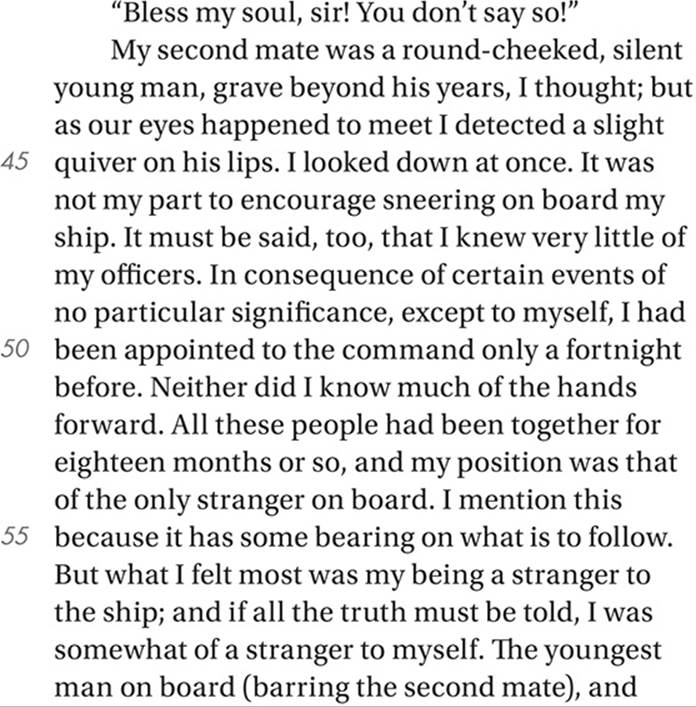
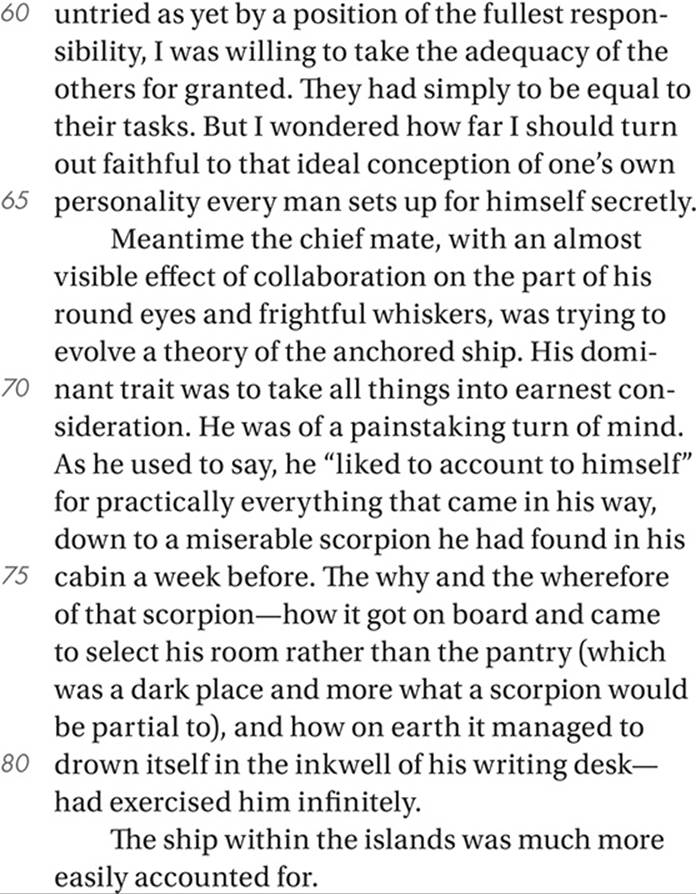
11
The tone of the first paragraph (lines 1–13) is primarily one of
A) reflective anticipation.
B) anxious dread.
C) unrestrained excitement.
D) objective analysis.
12
The reference to “some glare” (line 14) serves primarily to make the point that
A) the mastheads of another ship were not immediately visible.
B) the weather was about to change.
C) the ocean around the ship was choppy.
D) the crew was eager to get into the open sea.
13
In lines 20–24 (“The tide . . . friend”) the narrator describes
A) signs of impending danger.
B) reflections of his deep inner turmoil.
C) objects of wistful contemplation.
D) the recollection of a tragic experience.
14
The captain is portrayed primarily as
A) self-conscious and diffident.
B) rugged and adventurous.
C) anxious and short-tempered.
D) scholarly yet intimidating.
15
Which choice provides the strongest evidence for the answer to the previous question?
A) Lines 4–5 (“At that moment . . . her decks”)
B) Lines 24–27 (But, with . . . for good”)
C) Lines 48–51 (“In consequence . . . fortnight before”)
D) Lines 63–65 (“But I . . . himself secretly”)
16
In line 55, “bearing” most nearly means
A) direction.
B) demeanor.
C) relevance.
D) endurance.
17
In line 69, “evolve” most nearly means
A) change slowly.
B) ponder strenuously.
C) persuade earnestly.
D) advance randomly.
18
The “truth” to which the narrator refers in lines 57 is his
A) skepticism about his crew”s ability.
B) apprehension about a dangerous voyage.
C) lack of self-confidence.
D) sense that he may be going insane.
19
In line 81, “exercised” most nearly means
A) practiced.
B) strengthened.
C) utilized.
D) disquieted.
20
The “collaboration” (line 67) refers to an act of
A) selfless assistance.
B) deliberate menace.
C) contrived deceit.
D) strained contemplation.
21
The chief mate believed that, compared to the recently discovered ship, the “scorpion” (line 74) was
A) less explicable.
B) more frightening.
C) more ominous.
D) less miserable.
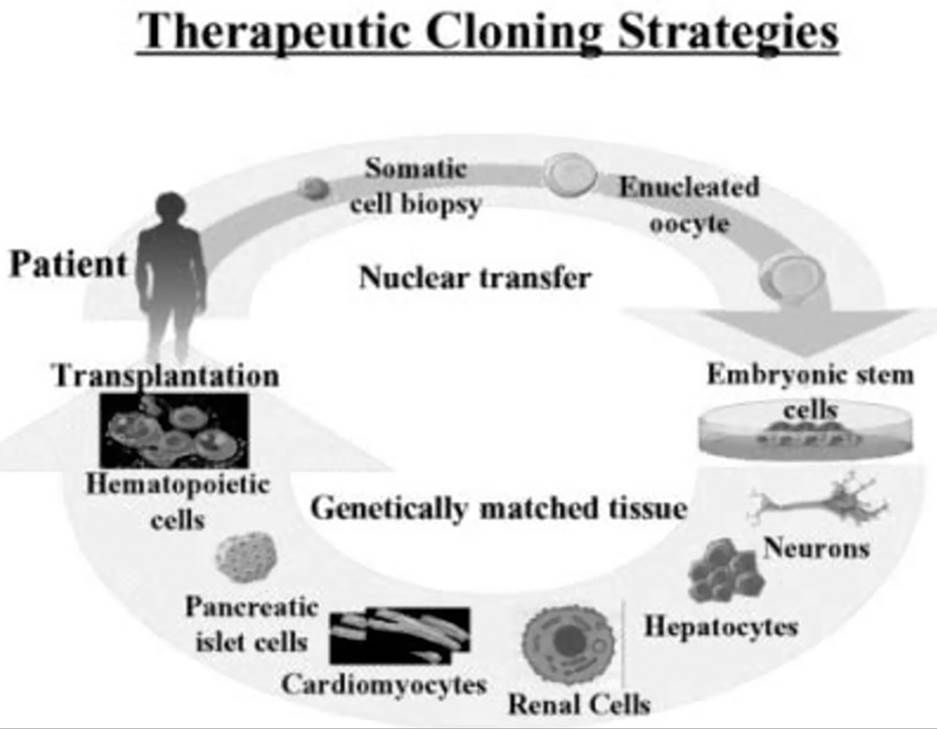
Source: National Institutes of Health
Questions 22–32 are based on the following passages.
Passage 1 is from Lindsay Smith-Doyle, “Thoughts on the Value of Life.” ©2015 by College Hill Coaching. Passage 2 is from Christopher F. Black, “Who”s Afraid of Cloning?” ©2015 by Christopher F. Black. Since 1996, when scientists at the Roslin Institute in England cloned a sheep from the cells of another adult sheep, many have debated the ethics of cloning human cells. These passages are excerpts from arguments on this issue.
Passage 1
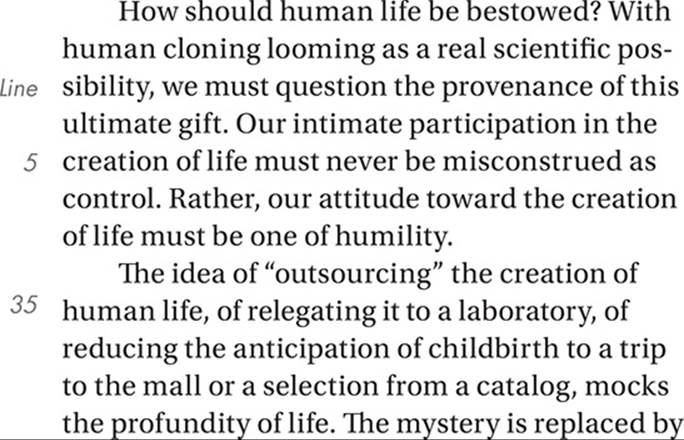
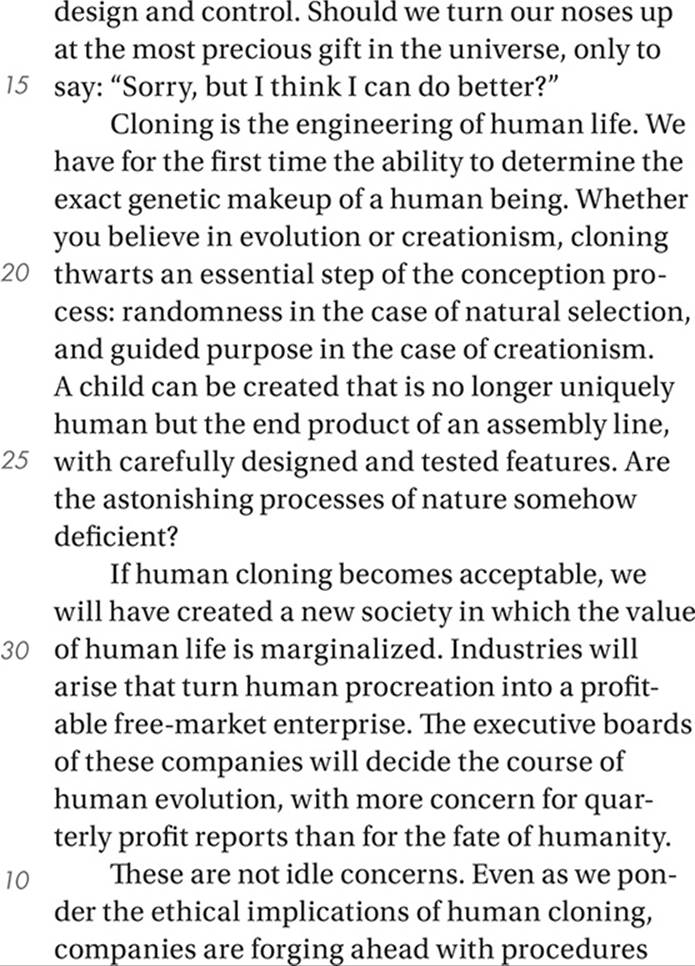

Passage 2
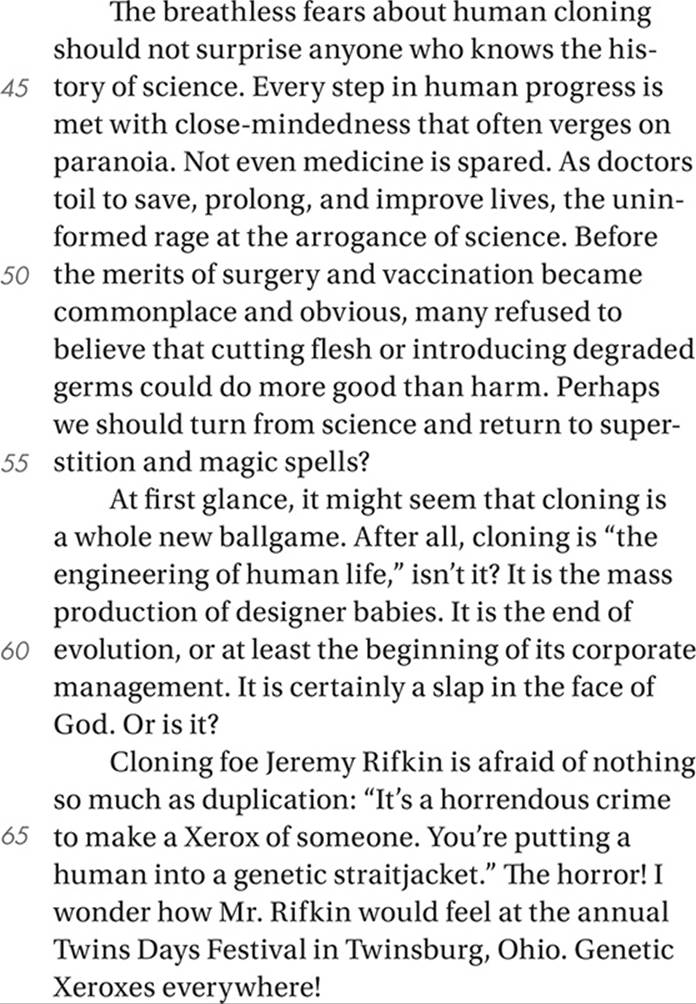
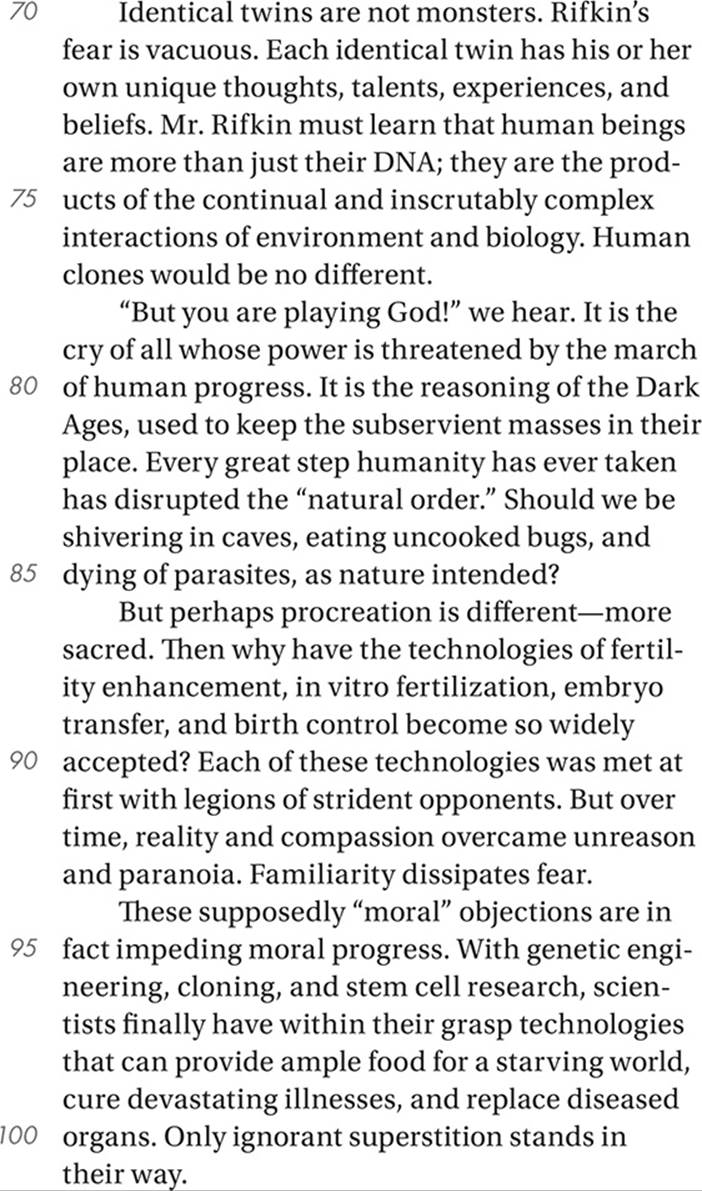
22
In line 13, “control” refers specifically to control over
A) the effects of cloning.
B) the development of genetic technologies.
C) the process of conception.
D) the ethical debate about cloning.
23
In Passage 1, the author”s attitude toward “outsourcing” (line 8) is one of
A) grudging approval.
B) blunt disdain.
C) firm support.
D) ironic detachment.
24
The quotations in line 15 and line 78 are similar in that both
A) represent the opinions of cloning opponents.
B) indicate cautious advocacy for genetic engineering.
C) are presented as being insincere.
D) contradict the viewpoints of the respective authors.
25
Jeremy Rifkin (line 63) would most likely advocate
A) the “humility” mentioned in line 7.
B) the “design and control” mentioned in line 13.
C) the “engineering” mentioned in line 16.
D) the “industries” mentioned in line 30.
26
The accompanying diagram best illustrates
A) the “guided purpose” mentioned in line 22.
B) the “assembly line” mentioned in line 24.
C) the “course of human evolution” mentioned in lines 33–34.
D) the “procedures” mentioned in line 38.
27
In line 52, “introducing” refers to an act of
A) explanation.
B) proposition.
C) announcement.
D) injection.
28
The author of Passage 1 would most likely regard the “management” (line 61) as
A) a necessary measure to avoid the abuse of procreative technologies.
B) an acceptable means by which the medical community can find alternatives to cloning.
C) a regrettable invasion of commercial interests into human reproduction.
D) a dangerous impediment to the development of effective cloning techniques.
29
Passage 2 quotes Jeremy Rifkin in line 64 primarily to
A) exemplify an untenable position.
B) illustrate the potential dangers of cloning.
C) reveal the interests of the corporate community.
D) cite a corroborating opinion from an expert.
30
Passage 2 refers to the Twin”s Day Festival in line 68 as an example of
A) a movement that promotes beneficial cloning.
B) a seemingly harmless event that harbors hidden dangers.
C) the innocuousness of genetic duplication.
D) the logical consequences of procreative technologies.
31
The author of Passage 2 would most likely argue that the “procedures” to which the author of Passage 1 objects in line 38 are in fact
A) inconsequential aspects of the cloning debate.
B) necessary contributions to medical progress.
C) not representative of the methods used by real genetic researchers.
D) ways of manipulating public opinion.
32
Which choice provides the strongest evidence for the answer to the previous question?
A) Lines 59–61 (“It is the end . . . management”)
B) Lines 71–73 (“Each identical . . . beliefs”)
C) Lines 80–82 (“It is the reasoning . . . place”)
D) Lines 95–100 (“With genetic . . . organs”)
Questions 33–42 are based on the following passage.
This passage is from Steven Pinker, An Invitation to Cognitive Science (Gleitman, Liberman, and Osherson, eds.) ©1995 by Bradford Book.
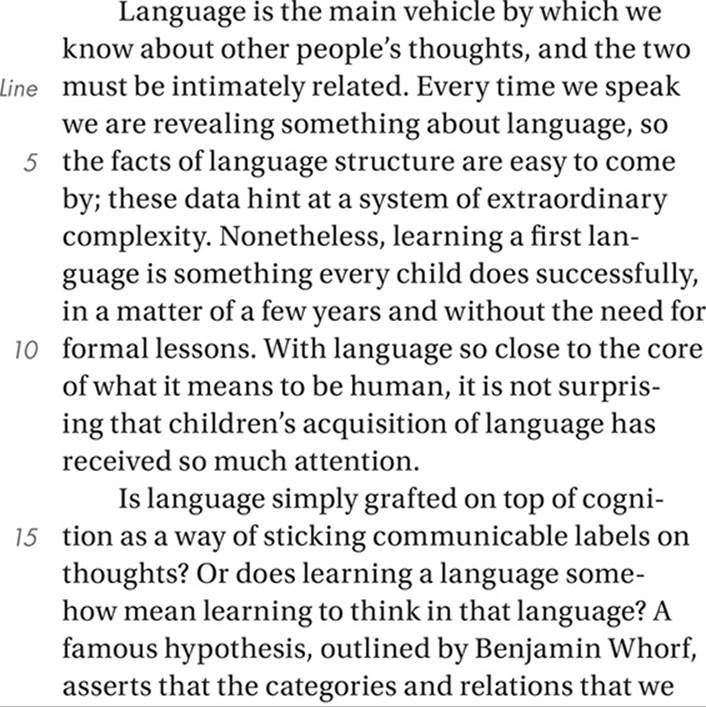
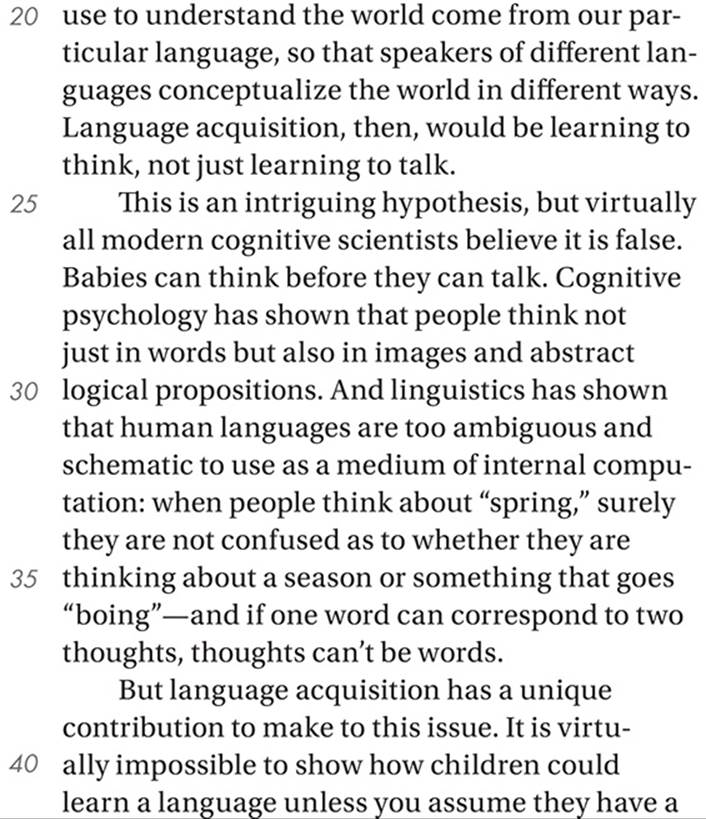
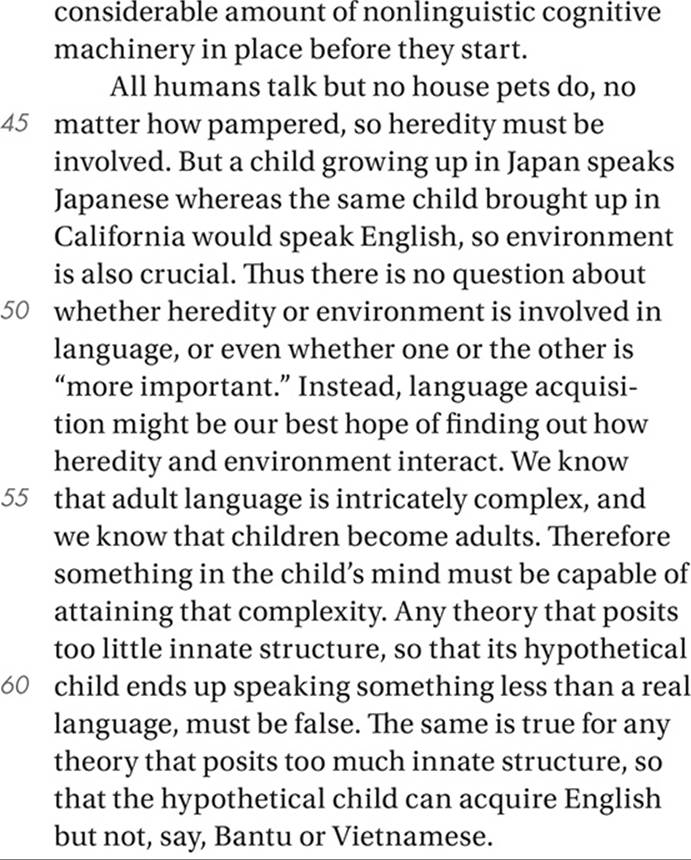
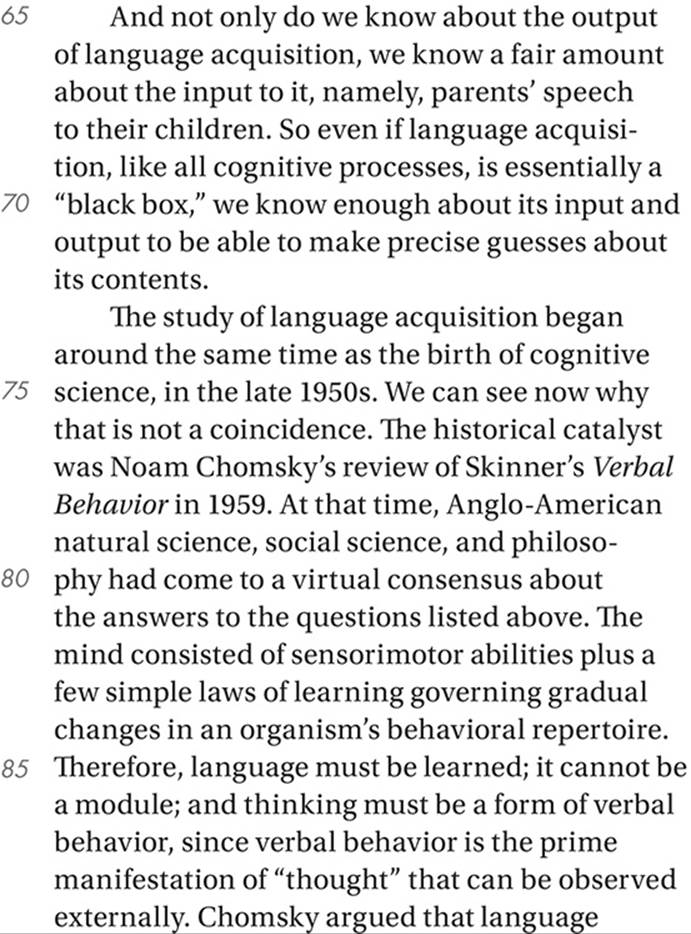


33
This passage as a whole is primarily concerned with
A) delineating the general principles of linguistics.
B) comparing the structural qualities of various languages.
C) exploring academic questions about how we learn language.
D) examining the claims of one influential linguist.
34
The “data” mentioned in line 6 most likely include information regarding
A) the literacy levels of various countries.
B) methods for teaching infants to speak.
C) the syntax rules of different languages.
D) the structures of the human cerebral cortex.
35
In line 2, “the two” refers to
A) self and other.
B) thinking and expressing.
C) grammar and syntax.
D) learning and teaching.
36
In line 15, “sticking” most nearly means
A) applying.
B) upholding.
C) piercing.
D) maintaining.
37
The author”s attitude toward Whorf”s “hypothesis” (line 18) is best described as
A) dismissive.
B) supportive.
C) ambivalent.
D) antagonistic.
38
The statement “Babies can think before they can talk” (line 27) is intended to indicate that
A) learning to talk is much more cognitively challenging than most people believe.
B) skills associated with basic reasoning are not dependent on verbal communication.
C) both physical and cognitive skills tend to develop according to rigid timelines.
D) researchers sometimes do not take into account the particular needs of infants.
39
Which if the following best summarizes the author”s view on human language acquisition?
A) Learning a language is a crucial step in learning to think, because thinking is verbal behavior.
B) The structures for learning language seem to be much simpler than what scientists previously thought.
C) Humans are born with very intricate cognitive structures for learning language.
D) Environmental input is more important than heredity in language acquisition.
40
Which choice provides the strongest evidence for the answer to the previous question?
A) Lines 1–3 (“Language is . . . intimately related”)
B) Lines 23–24 (“Language acquisition . . . to talk”)
C) Lines 61–64 (“The same . . . Vietnamese”)
D) Lines 95–97 (“Hence language . . . general intelligence”)
41
In line 62, “structure” refers to
A) the grammatical rules of a language.
B) the functional organization of the mind.
C) the environment in which infants learn.
D) the systems for investigating linguistic claims.
42
The subjects listed in lines 78–80 are given as examples of disciplines that, in 1959,
A) accepted the hypothesis that cognition depends on verbal skills.
B) considered the scientific method inadequate to the study of language acquisition.
C) regarded most of the processes in involved in language acquisitions to be innate.
D) questioned the conventional theories regarding how humans learn language.
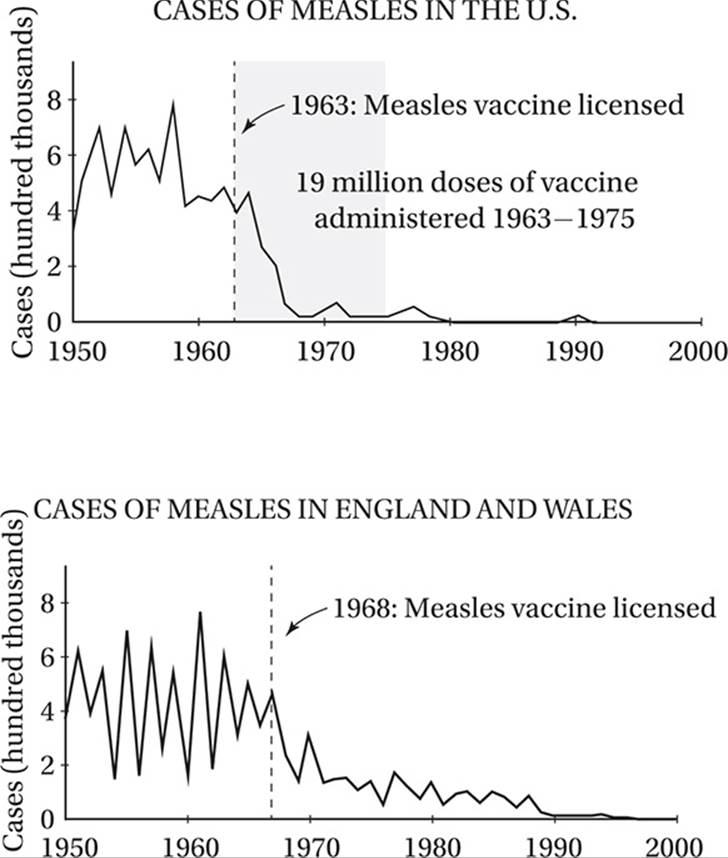
Source: Centers for Disease Control and Prevention
Questions 43–52 are based on the following passage and supplementary material.
This passage is adapted from Rick Smolan and Phillip Moffitt, “Medicine”s Great Journey.” ©1992 by Schering Laboratories, Calloway Editions.
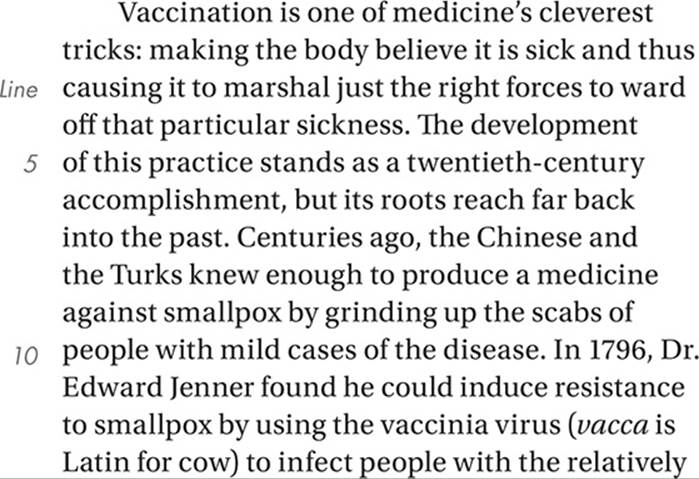
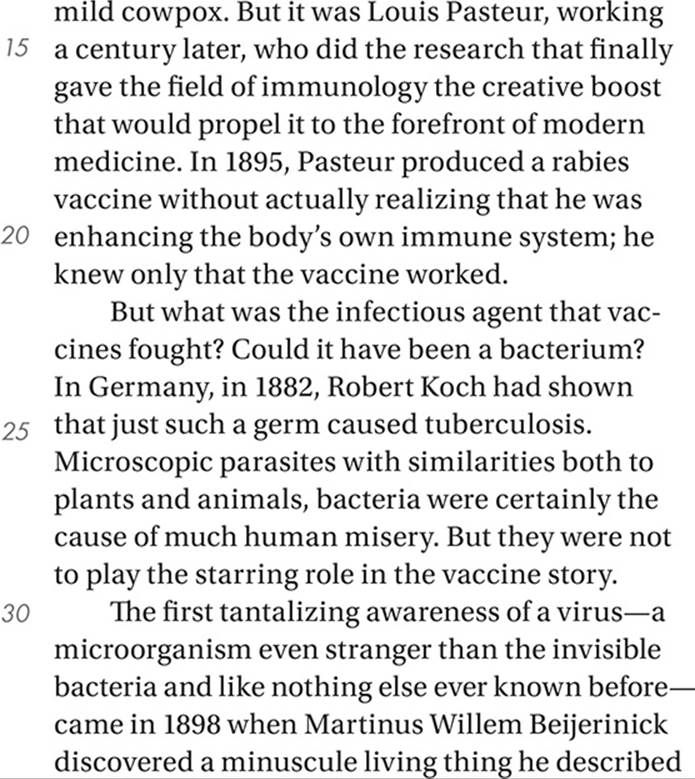
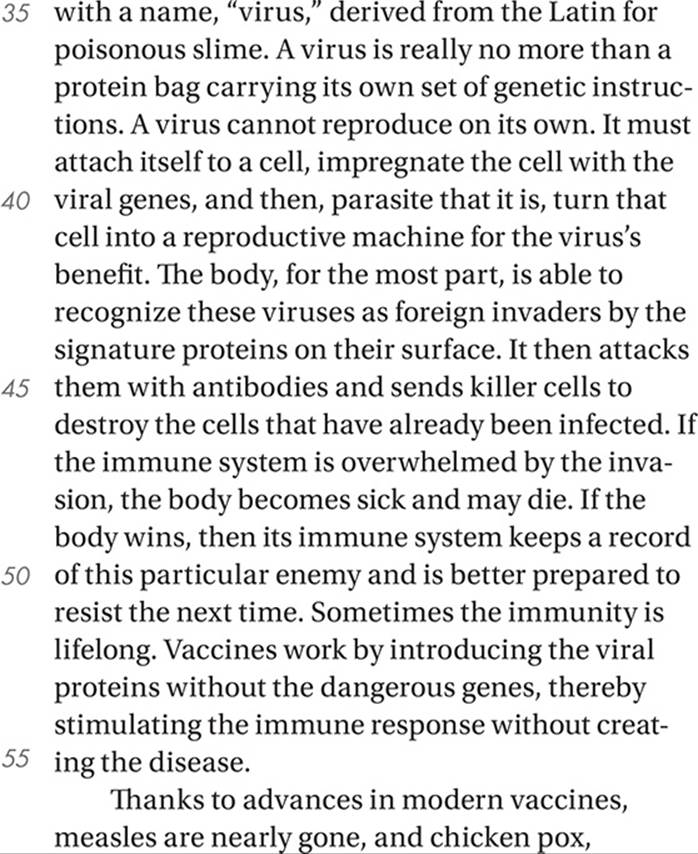
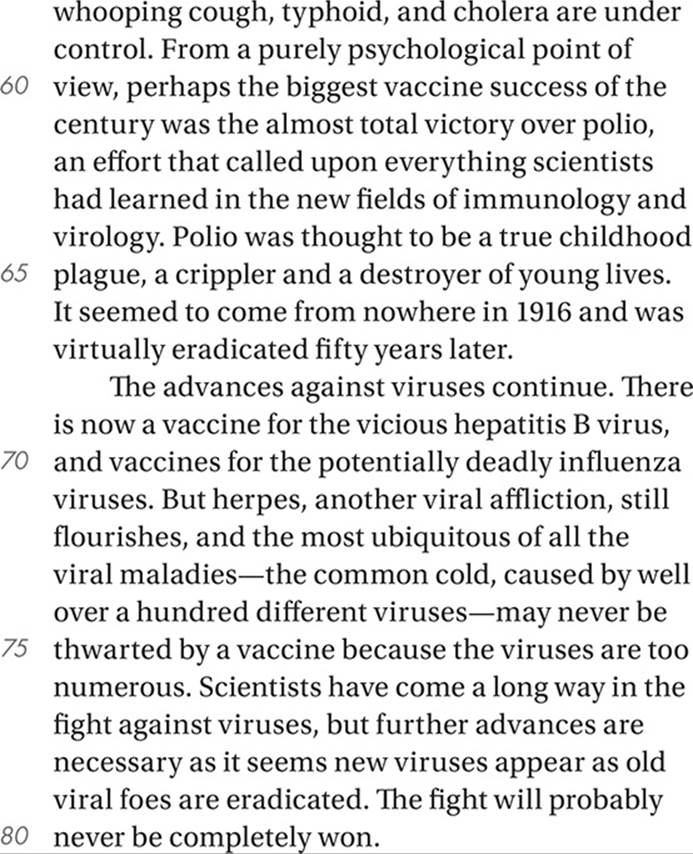
43
The passage as a whole serves primarily to
A) outline the various means by which the human immune system fights infection.
B) describe the history and scientific underpinnings of a medical technique.
C) compare the medical practices of different cultures throughout history.
D) identify particular controversies surrounding a therapeutic method.
44
The passage mentions the “Chinese and Turks” (lines 7–8) as examples of cultures that
A) identified the cause of viral infections.
B) employed early forms of vaccination.
C) were misguided in their use of medical remedies.
D) were decimated by deadly infectious diseases.
45
The passage indicates that viruses cause all of the following EXCEPT
A) tuberculosis.
B) cowpox.
C) polio.
D) hepatitis.
46
Which of the following statements about vaccines is best supported by the passage?
A) Some effective remedies for infectious disease were used before their mechanisms were understood.
B) The discovery of bacteria was key to the development of the first successful vaccine.
C) Vaccines consist of antibodies that are introduced into the bloodstream to ward off infections.
D) Vaccines work by thwarting the process that allows viruses to reproduce themselves.
47
Which sentence provides the best evidence for the answer to the previous question?
A) Lines 1–4 (“Vaccination is . . . sickness”)
B) Lines 18–21 (“In 1895 . . . worked”)
C) Lines 24–25 (“In Germany . . . tuberculosis”)
D) Lines 38–42 (“It must . . . benefit”)
48
The discussion in the third paragraph (lines 30–55) suggests that relationship between the virus and the cell is most similar to the relationship between
A) a cowbird and the Eastern phoebe, in which the cowbird lays its eggs in the nest of the phoebe, which raises the young as its own.
B) a grizzly bear and a salmon, in which the bear captures and eats the salmon before it can spawn, thereby reducing the population of the next generation.
C) a tickbird and a rhinoceros, in which the tickbird cleans the parasites that live on the rhinoceros, thereby providing benefit to both animals.
D) a bumblebee and a flower, in which the bumblebee gathers nectar from the flower, while also distributing the pollen of the flower to distant plants.
49
The passage suggests that bacteria are similar to viruses in that they
A) can provide benefit as well as inflict harm.
B) can reproduce even in very harsh environments.
C) have played a major role in the development of vaccines.
D) can be parasitic to their hosts.
50
In line 44, “signature” most nearly means
A) proprietary.
B) deleterious.
C) distinctive.
D) advantageous.
51
Which of the following best describes the function of the final paragraph?
A) It presents a generalization to explain the examples mentioned in the previous paragraph.
B) It answers a question suggested in the previous paragraph.
C) It gives an example illustrating a concept introduced in the previous paragraph.
D) It qualifies the tone of the previous paragraph.
52
The two graphs (Figure 1 and Figure 2) are presented together most likely to illustrate
A) the fact that measles cases were already beginning to decline before the vaccines were licensed.
B) the wide range of variables that can affect the communicability of an infectious disease.
C) the merits of administering a vaccine in a single dose as opposed to over an extended period.
D) the effects of the measles vaccine administered to comparable populations but at different times.
STOP
If you finish before time is called, you may check your work on this section only. Do not turn to any other section of the test.